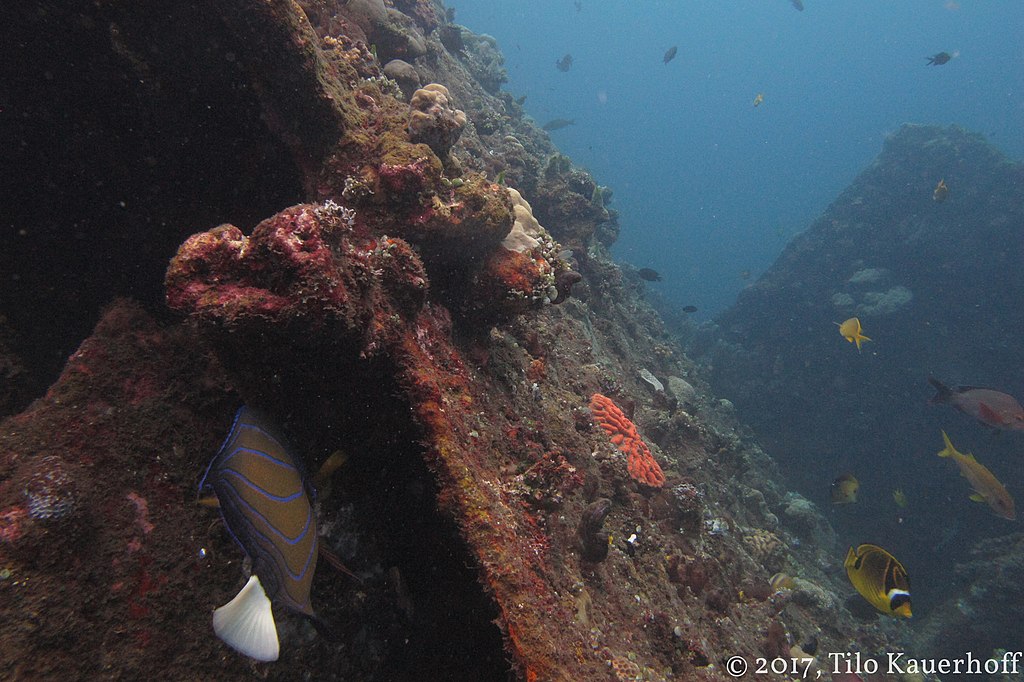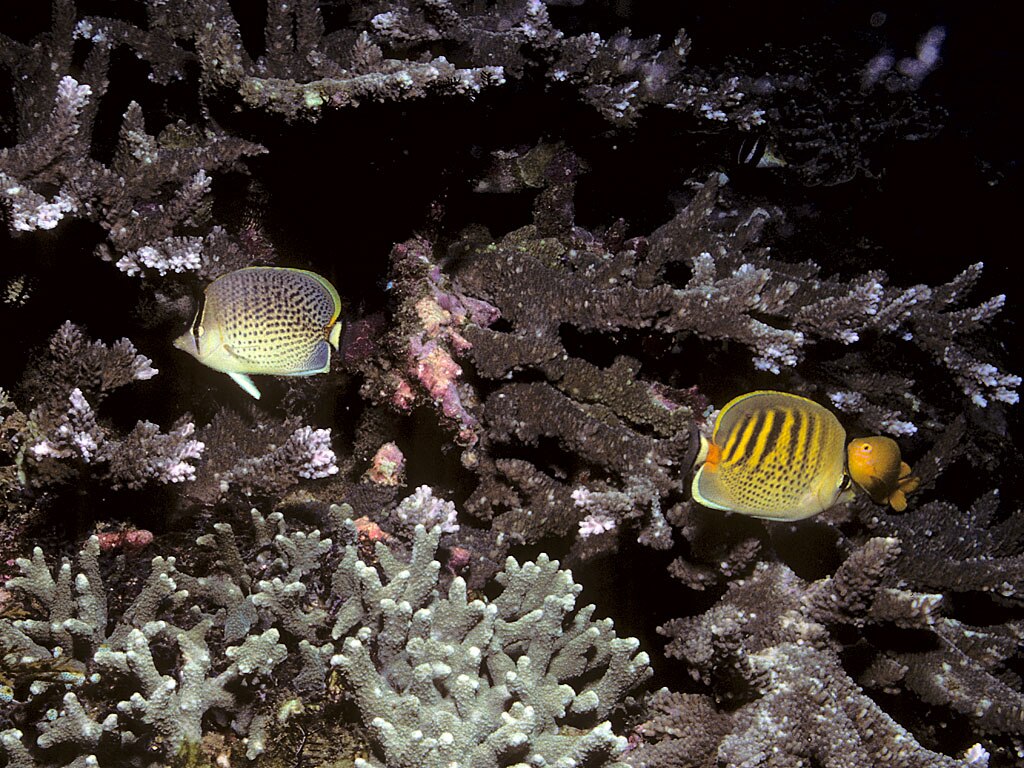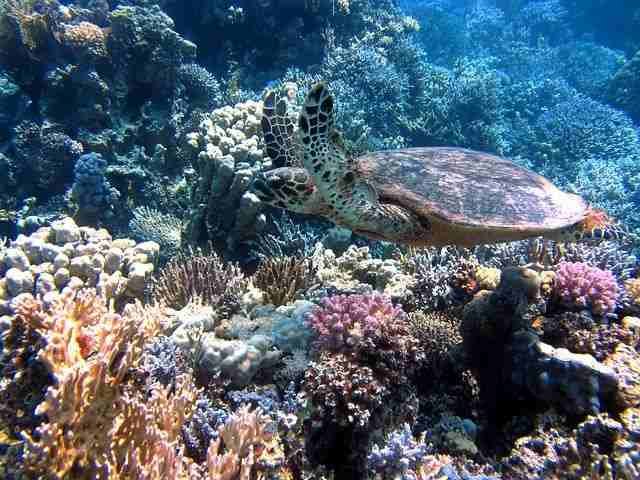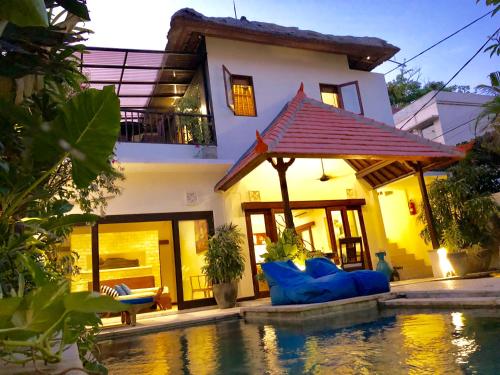The Best Dive Spots in Bali
It is well known, Bali and its surrounding islands are full of breathtaking diving spots. And the good news is that there is something for all tastes and all levels! There are so many dive spots on the Island of the Gods (Bali) that it can be difficult to choose. So we made a small selection of the best spots, for beginners, intermediate and advanced levels.
Where in Bali can you go diving to find the best spots for the sport? Most of the best dive sites are located on the coast to the north and east of Bali, or on the islands off these coasts. There are many wide variety of diving spots, whether you are a beginner, a professional or simply curious to try diving, you are bound to find a spot that suits you.
Where in Bali can you go diving to find the best spots for the sport?
Bali is known for its beautiful beaches, breathtaking landscapes, and world-class diving spots.
Most of the dive sites are located on the coast to the north and east of Bali, or on the islands off these coasts. There is really a wide variety of diving spots, whether you are a beginner, a professional or simply curious to try diving, you are bound to find a spot that suits you.
Here are some of the best dive spots in Bali that are sure to offer a memorable underwater experience.
1. Manta Point (Nusa Penida & Nusa Lembongan)
Just a short boat ride from Bali’s mainland, Nusa Penida offers some of the best dive sites in Bali. Here, you can swim with giant manta rays and explore colorful coral gardens.
Located on the southern tip of Nusa Penida, Manta Point is only accessible by boat, in 45 minutes. Diving at Manta Point is quite easy, and the site is shallow (maximum depth of 15 meters). It is therefore widely accessible to all levels of diving. However, it is a very popular site because it is undoubtedly the best spot to swim with manta rays in Bali, so I advise you to dive early in the morning to avoid the crowds of divers!
Minimum level: beginner.
Current: low to medium. sometimes very strong.
Water temperature: 15 to 28°C (59 to 82.5°F).
Max depth: 25m (82ft).
What to see underwater: manta rays.
Best time to dive: all year round.
Nusa Penida, Manta Point. Andrepiazza, CC BY-SA 3.0, via Wikimedia Commons
Why Manta Point is very popular?
Manta point is one of the very popular sites of Nusa Penida. And we understand why ! Diving with manta rays is a dream and a joy you can’t get enough of. The dive site is about 1 hour by speed boat from Sanur or Padang Bai, you can admire the superb limestone cliffs of Nusa Penida on the way. The majestic Manta used to come to be pampered at a cleaning station in South Nusa Penida. Diving is easy and is accessible to all levels of certified diver. The site is not very fishy and poor in corals but that is not the point, you might say.
No current but often swell and surf. On the station at a depth of 6 meters (20 ft) the ballet is magical, the mantas spinning around you. Rules are in order not to frighten them and suddenly make them leave, not to dive above the station and not to deliberately approach them too closely. The plateau is quite mineral but good surprises are sometimes present such as white tip sharks, nurses, bamboo and often green turtles. Further west, a small drop off is an opportunity to see if the behemoth Mola Mola is around.
Best Nusa Penida Diving Sites | One of the Best Dive Places in Bali
2. Crystal Bay (Nusa Penida)
Crystal Bay is “the” site of Nusa Penida. Just as its name suggests, the visibility is breathtaking, it can reach up to 50 m (164 ft). This is because the cool, clear water from the depths rises in the bay, the water temperature can drop really quickly and thermoclines are frequent. The good news is that it’s not just the water that comes up, there’s also the famous sunfish Mola Mola. Indeed the Mola Mola spends its life at great depths and goes back on rare occasions to be dewormed by the fish carriers and the angel fish.
The spectacle of a Mola Mola being dewormed is one of the things to see in the life of a diver because it is quite simply an incredible mastodon. But all good things must be earned, Crystal Bay is a dive site that can be dangerous, downdrafts are frequent and especially sudden, it is important to dive with an experienced guide who knows how to analyze the clues. The best time to dive is a little before the high tide stall, the stall and a bit after.

Mola Mola Sunfish. Roland Unger, CC BY-SA 3.0, via Wikimedia Commons
2 stages
Diving in Crystal Bay takes place in two stages, the first is to start the dive near the drop-off and follow it to the north if the conditions allow it. You have to look in the blue in case the precious one arises. Secondly, the continuation of the dive on the coral plateau is wonderful, a ballet of banner fish, trevally, small tuna and all the reef fish. The flora is very well preserved and the hard and soft corals are absolutely beautiful. At the end of the dive you can make your safety stop near very beautiful porites where the atmosphere with the crystal clear water and the white sand bottom is magnificent.
Diving level: Level 1 and + (different diving profiles depending on the level)
Max depth: 40m (131ft)
Visibility: Excellent to good
Temperature: 16 to 28°C (60.8 to 82.4°F)
3. SD, PED, Sental (Nusa Penida)
Sental, PED and SD are three dive sites North of Nusa Penida. All three of similar characteristics. Sental most in the East, PED in the center and finally SD abbreviation of Sekolah Dasar (primary school) the site in the West. The topography for all three sites is a slight coral shelf and a steep slope down to the depths. There is often a little current which authorizes to qualify them as drifting.
This part of the island offers calmer waters that are less prone to waves, the plateau is very pretty and essentially made up of hard corals and sponges. On the slope the reef is very well preserved and hard corals mingle with soft corals and different types of sponges. The fauna is very varied and includes the whole panel of Bali reef fish. In the blue, a school of tuna, reef sharks, barracudas, rays, but also Mola Mola can always appear and even a few cases of whale sharks have been reported. Visibility is often very good except in the event of a thermocline, you will have to descend in the cool for better visibility!
Diving level: Level 1 and +
Max depth: 30m
Visibility: Excellent to average
Temperature: 17 to 29°C (55.7 to 84° F).
4. Kubu (Amed, Tulamben), Northeast Bali
Amed is a fishing village on Bali’s northeast coast that offers some of the best diving in Bali. The area is home to a diverse range of marine life, including pygmy seahorses, reef sharks, and sea turtles.
Located on the northeast coast of Bali, Tulamben is famous for its USAT Liberty shipwreck. The wreck is now covered with vibrant coral and teeming with marine life, making it a popular spot for divers of all levels.
This spot is especially suitable for experienced divers. The dive begins on a coral garden, then you descend along a drop-off, where you can see black and white tip reef sharks. On the sandy bottom you will also have the chance to see blue-spotted rays! This site is also home to a beautiful wreck of an Indonesian ship that sank.
Minimum level: advanced.
Current: none to medium.
Water temperature: 26 to 30°C (78.8 to 86°F).
What to see underwater: reef shark, humpback parrotfish, barracuda, wreck of an Indonesian ship
Best time to dive: February to April.

Part of the USAT Liberty shipwreck in Tulamben, Bali and how it is overgrown with hard corals and sponges. Inhabiting fish looking for food or shelter. Tilonaut, CC BY 3.0, via Wikimedia Commons
Tulamben in the North-East of Bali is the essential village for diving in Bali. With its nearby pebble or black sand beaches, Tulamben is world famous thanks to its famous wreck of the USAT Liberty ship. The wreck remains a must do by day and even more so by night.

Some fish couldn’t resist but pose in their natural frame of the USAT Liberty shipwreck in Tulamben, Bali. Tilonaut, CC BY 3.0, via Wikimedia Commons

Soft coral. Shooted in Bali near Amed. AlexeiAVA, CC BY 4.0, via Wikimedia Commons
5. Turtle Bay (Candidasa, Padang Bai), East Bali
Padang Bai is a small fishing village on Bali’s east coast that offers excellent diving opportunities. The Blue Lagoon and Jepun dive sites are popular for their crystal-clear waters, colorful fish, and diverse coral formations.
If you want to swim with turtles, this spot near Padang Bai is undoubtedly the best! You have a 90% chance of encountering beautiful turtles during your dive, and even of seeing rays. Turtle bay is one of the best dive spots in Bali.
Minimum level: beginner.
Current: none to medium. Occasionally the current can be strong.
Water temperature: 20°C to 30°C (68 to 86°F).
What to see underwater: manta rays and turtles.
Best time to dive: all year round.
6. Jepun (Candidasa, Padang Bai)
Jepun is THE essential dive site to see the famous blue-spotted rays, as in the photo below. It is also an excellent spot for macro underwater photography thanks to the many rare aquatic species found there. At 17 meters deep, you can even see a small wreck and some metal structures underwater.
Minimum level: beginner.
Current: medium. Occasionally the current can be strong. Ideal for drift diving.
Water temperature: 20 to 30°C (78.8 to 86°F).
What to see underwater: blue-spotted stingrays, frogfish, nudibranchs, small wreck at 17m (56 ft) depth.
Best time to dive: all year round.

Thornback Cowfish has a pair of large spines that are forward in front of the eye. This species lives in tropical waters, and some of the warm climates of the Indo-Pacific ocean.
Has a unique poison compared to other fish poisons; Pahutoxin (formerly called ostracitoxin), is a neurotoxin that is present in the mucous secretions of the skin of these fish (Ostraciidae), and appears when the animal is under stress. The picture was taken in the waters of Padang-Japan Bay, Padang Bai. victorius eps, CC BY-SA 4.0, via Wikimedia Commons

Chaetodon guttatissimus, Peppered butterflyfish (left) and Chaetodon punctatofasciatus, Spotband butterflyfish (right) amongst Acropora corals. Underwater photograph, Padangbai, Bali, Indonesia. Bernard E. Picton BernardP, CC BY-SA 4.0, via Wikimedia Commons

Padangbai harbour. Magul, CC BY-SA 4.0, via Wikimedia Commons
7. Blue Lagoon Beach (Padangbai), East of Bali
Good for: Sandy beach, snorkelling, dive
Very intimate lagoon with mesmerizing blue, located on the edge of Padang Bai. A real haven of peace hidden in the middle of lush vegetation. You will be able to rent fins, mask and snorkel to enjoy the seabed accessible a few meters from the edge.
8. Jemuluk Beach (Amed, East of Bali)
Good for: Sandy beach, snorkelling, dive
The village of Amed is renowned for its seabed and its magnificent black sand beaches. One of them stands out for its brightly colored corals and its high concentration of fish: Jemuluk Beach. Also take the time to get your head out of the water to admire the surrounding landscapes, dominated by the imposing Mount Agung.
Gili Selang (near Amed)
Good for: Black sandy beach, snorkelling, dive
Gili Selang is a small island located along the coast south of Amed. Also called Waterloo, this site is for experienced divers. Located at the entrance to the Lombok Strait, the site offers an exceptional coral reef, the marine life there is very different from that of the Amed and Tulamben area but similar to that which you can encounter near Nusa Penida. The site is made up of a small bay, the island of Gili Selang closing it and forming the easternmost tip of Bali.
It presents very different diving conditions from the calm and warm waters of Amed and Tulamben. The density of corals and reef fish is exceptional here, it is also very common to encounter Napoleon fish, turtles, reef and pelagic sharks.
Big fish action in Gili Selang
Its not only macro in Bali. Excellent big fish action right in front of our doorstep. Gili Selang is shark guarantee for experienced divers 🙂 #giliselang #amedwhitesanddivers
Posted by Amed White Sand Divers on Thursday, January 11, 2018
Location
Located at the extreme eastern tip of Bali, this island is already exposed to the famous “Flow Through” current which circulates between Bali and Lombok and connects the Indian Ocean to the Pacific Ocean. Its cold and rich waters allow corals and fish to grow and multiply which gives the dive sites their richness and their colors. Larger life forms are attracted by the stronger currents around the islands and barracuda, trevally or sharks can often be seen. These same currents make them more challenging dive sites so only advanced certified divers with a minimum amount of dives are allowed to dive there. For safety reasons, Gili Selang can only be dived from a boat and dive availability is subject to weather conditions, currents and tides.
Information
Type of dive: Boat dive (a boat that recreational divers or professional scuba divers use to reach a dive site which they could not conveniently reach by swimming)
Depth: 5 – 25 meters (around 16 – 82 ft)
Minimum required level: Advanced – Level 2
Visibility: 15 – 20 meters (around 49 – 66 ft)
Current: Medium to very strong
Temperature: 26 – 30°C (around 78,8 – 86°F)
Access
1 hour by boat from Padang Bai on the east coast of Bali.
Or this site is accessed by traditional Balinese fishing boat, more commonly known as Jukung. About 20 minutes by boat from Lipah Bay.
From Bali to Gili Islands | Complete guide to visit Meno, Air, Trawangan Islands
9. Gilimanuk Bay (Menjangan, Lovina)
Menjangan Island is located in West Bali National Park, Menjangan Island is a popular spot for divers and snorkelers. The area offers clear waters, pristine coral reefs, and the chance to see a variety of fish and other marine life.
Located at the northwestern tip of Bali, Menjangan Island or Deer Island is part of the Bali Barat Nature Reserve.
This diving spot in the northwest of Bali will delight fans of muck-diving and underwater photography. It is known for its great biodiversity. Only 40 minutes by boat from Permuteran or Lovina, this site is a must if you want to photograph formidable creatures underwater!
Minimum level: intermediate.
Current: none to medium.
Water temperature: 26 to 30°C (78.8 to 86°F).
What to see underwater: ideal for underwater photography and muck-diving.
Best time to dive: February to April.

Menjangan island. Lakshmi Sawitri, CC BY 2.0, via Wikimedia Commons
Eel Garden
Eel Garden at the northwestern tip of the island of Menjangan is a pleasant and surprising site for its topography. You will start your dive with a superb drop-off very rich in gorgonians and sponges. You will follow the one if at a depth not exceeding 30 meters. In the middle of the dive you will arrive on a coral plateau and a white sand bottom where thousands of garden eels live, just waiting for you to photograph them! you will finish your dive by palming from one coral “potato” to another, the shallowest depth guaranteeing you an exceptional panorama of colors.
Diving level: Easy, level 1
Max depth: 30m (98.4 ft)
visibility: Very good
Temperature: 26 to 30°C (78.8 to 86°F)
Pos 1
Pos 1 owes its name in reference to the post number of the rangers of the reserve. It’s the perfect place on earth for a lunch break. A large white sand beach and a breathtaking view of the volcanoes of Java. The dive site is rather reserved for baptisms. Accessible directly from the beach or the pontoon, you will follow a small shallow reef.
The sandy bottom sometimes holds good surprises.
Diving level: Beginner
Max depth: 20m (65.6ft)
Visibility: Good
Temperature: 28 to 30°C (82.4 to 86°F)
Secret Bay, Gilimanuk, Northwest Bali
Located in the northwest of Bali, Secret Bay is a popular spot for macro diving, offering the chance to see a variety of unusual and rare marine species, including seahorses, nudibranchs, and frogfish.
Diving in Gilimanuk Bay will not leave you indifferent! True “Muck” diving par excellence. Gilimanuk is the entry point to Bali from Java, its ferry terminal provides daily connections to cross the 3 km of the Bali Strait. Gilimanuk Bay is quite small (2km or 1.2 miles wide) and shallow. Secret Bay is mostly bordered by mangroves and has two small islets of mangroves, Pulau Kalong and Pulau Burung, respectively bat islet and bird islet.
The proximity of the Bali Strait ensures the rhythm of the tides a considerable supply of nutrients to the fauna and flora of the bay. Secret bay is above all a Macro dive on a sandy or even muddy bottom, visibility can be drastically reduced by an unfortunate blow of the fin not appropriate! It is very important to dive during a rising tide so that the fresh and clear water from the depths of the Bali Strait ensures correct visibility to look for the atypical fauna of the dive site.
Fauna dive at Gilimanuk
We don’t often give information about the fauna of the dive sites to our divers to keep them amazed, however your guides will be on the lookout for Antennarius Hispidus and other Antennaires, Eurypegasus draconis, Rhinopias, Harlequin and Robusta ghost fish, the famous aquarium fish Pterapogon Kauderni and many other things that will surprise you. In general we make two dives, the first on the left side in order to inspect the different structures placed on the sand and the second on the right side up to the coral culture tables.
Diving level: Easy, level 1
Max depth: 9m (29.5 ft)
Visibility: poor to good
Temperature: 20 to 26°C (68 to 78.8°F)
10. Gilimanuk Bay, diving in Pemuteran and Puri Jati
Pemuteran dive site
Pemuteran is a small village in the North West of Bali which took off with the development of diving and the craze for diving in the nearby island of Menjangan. This region of Bali being far from the tumult and the animation of the South of the island has managed to keep its relaxed and family character. The dives in Pemuteran are quite accessible for all levels, but are rather reserved for training. Some beautiful drop-offs, a less loaded fauna than in Menjangan but which is worth the detour in night diving.
Diving level: Baptism at Level 2
Max depth: 40m (131ft)
Visibility: Good to fair
Temperature: 27 to 30°C (80.6 to 86°F)
Puri Jati dive site (Pemuteran)
Puri Jati or PJ for short is one of Bali’s famous Muck dive sites. A priori nothing exceptional at first glance, black sand, black sand and more black sand. Very very few corals, a little seagrass and some soft corals. But there is the charm of this atypical dive, you can’t get bored as the unsuspected fauna is so rich! There are days when it’s all there, some less but every creature you find at PJ will be something rare and something every diver would dream of seeing. you have been warned!
Diving level: Level 1
Max depth: 20m (65.6ft)
Visibility: Good to bad
Temperature: 27 to 30°C (80.6 to 86°F)
When to dive in Bali?
You can dive all year round, but in some places it is best to dive at a specific time of year. Especially if you want to see some particular species underwater.
This table brings together all the details to enlighten you on the best times to dive, depending on the city for best dive spots in Bali:
| Visibility | Level | What to see underwater | Number of dive spots | Best time to dive | |
|---|---|---|---|---|---|
| Nusa Dua | 5 – 15 m |
(16.4-49ft)BeginnerSea snakes, frogfish, sea bats (bat star, webbed star)2All yearNusa Lembongan & Nusa Penida20 – 45 m
(65-147.6ft)Beginner and advancedSunfish (mola-mola), manta raysMore than 15All year round but the sea is a bit choppy from June to September. Sunfish from June to SeptemberAmuk Bay (Padang Bai – Candi Dasa)10 – 30 m(32.8-98.4ft)Beginner and advancedSharks and sometimes sunfish7All year round but the sea is a bit choppy from June to September. Sunfish from August to SeptemberGili island15 – 25 m(32.8-82ft)Beginner and advancedSea turtles, gray reef sharksMore than 20All year round but reduced visibility from December to JanuaryFrom Amed to Gili Selang10 – 25 m(32.8-82ft)Beginner and advancedBarracudas and gray reef sharks8April to NovemberTulamben10 – 30 m(32.8-98.4ft)Beginner and advancedThe wreck of the USAT Liberty5All yearPemuteran10 – 25 m(32.8-82ft)Beginner and IntermediateTuna and barracuda5All year but avoid AugustMenjangan Island10 – 25 m(32.8-82ft)Beginner and advancedColorful aquatic fauna in the heart of corals, 19th century wrecks9All year but avoid AugustGilimanuk Bay20 – 50 m(65-164ft)Beginner and IntermediateFrogfish, nudibranchs (soft-bodied marine gastropod molluscs). Ideal for macro photography1From February to April
In summary, Bali offers a range of diving experiences, from wrecks to coral gardens, and from large pelagic to macro life. Whether you’re a beginner or an experienced diver, Bali has something to offer for everyone. So, if you’re looking to explore the underwater world, make sure to add these dive spots to your Bali itinerary.
Remember to dive responsibly, follow all safety guidelines, and respect the marine environment. Whether you’re a beginner or an experienced diver, Bali’s dive spots offer unforgettable underwater experiences for all to enjoy. Have fun!
Water Sports Place in Bali | Best Spots for Aquatic Activities
Sources: CleverlySmart, PinterPandai, Blue Water Dive Travel, Travel Triangle
Photo credit: lpittman via Pixabay
Ready to secure your villa in vibrant Seminyak, Bali – the ultimate happening place?




